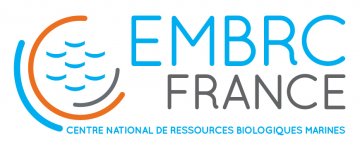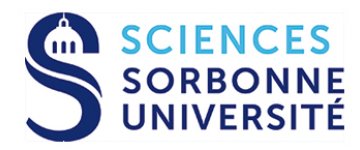Thesis defense / Control of diatom blooms by parasites in the Western English Channel
Laure Arsenieff
Nathalie Simon et Anne-Claire Baudoux
Claire GACHON, Professor, The Scottish Association for Marine Science
Kay BIDLE, Professor, Rutgers University
Télesphore SIME-NGANDO, Researcher, Laboratoire Microorganismes : Génome et Environnement
Éric THIEBAUT, Professor, Station Biologique de Roscoff
Abstract
Diatoms are one of the most successful phytoplankton groups. They can form considerable seasonal blooms with important biogeochemical implications, especially with respect to carbon export. To date, the role of parasites in the regulation of diatom blooms remains elusive. The main objective of this thesis was to identify the parasites associated to dominant diatom species in the Western English Channel to better understand how parasitism regulates diatom blooms. The first part of the project aimed to identify parasitic network that controls the diatom Guinardia, a major component of microphytoplankton communities in coastal systems of the North Atlantic. Intensive isolation of Guinardia species and associated parasites into laboratory culture was carried out between August 2015 and October 2016 from the SOMLIT-Astan long-term monitoring station. Characterization of these isolates revealed an unsuspected diversity of parasites that infect Guinardia delicatula, with at least three types of parasites belonging to distinct lineages: viruses (Picornavirales, Bacillarnavirus), a eukaryotic parasite (Labyrinthulomycetes, Aplanochytrium sp.) and algicidal bacteria (Bacteroidetes, Kordia sp.). These pathogens have never previously been described in association with Guinardia and therefore add to the list of known parasites reported for this host species. The parasites isolated from SOMLIT-Astan displayed different infection strategies, suggesting complex interplays in nature. In the second part of this thesis, the study was extended to nanoplanktonic diatoms that belong to the genera Minidiscus and Thalassiosira. These minute microalgae are widespread in the global ocean, but their seasonal dynamics are quasi-unexplored. Using a combination of microscope observations and molecular tools, we showed that these nanodiatoms numerically dominated the phytoplankton community at the SOMLIT-Astan station and that they have contrasted seasonal patterns. The large set of 82 parasites, including 27 viruses, isolated from these two genera throughout the sampling period highlights, for the first time, the key role of biotic interactions in the regulation of nanodiatom dynamics. This Ph.D. project has revealed significant novel diversity of pathogens of diatoms in the Western English Channel. The relative contribution of these parasites to regulation of diatom populations and their resulting biogeochemical and evolutionary implications remain to be investigated.







